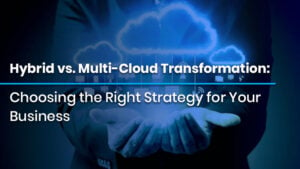
How to Strengthen Security Using CIS Controls and Posture Analysis
How to Strengthen Security Using CIS Controls and Posture Analysis Introduction In the fast-paced and ever-evolving world of cybersecurity, defending digital infrastructure goes far
🔥Premium Monthly Plan – Only $11.99!🔥Hurry! This exclusive deal won’t last long. 👉 Subscribe Now!

How to Strengthen Security Using CIS Controls and Posture Analysis Introduction In the fast-paced and ever-evolving world of cybersecurity, defending digital infrastructure goes far

How to Prepare for the AWS Data Engineer Exam Introduction With the world becoming increasingly data-driven, organizations are depending on cloud-based systems to store, process,

Hybrid vs. Multi-Cloud Transformation: Choosing the Right Strategy for Your Business Introduction In the digital-first economy of today, cloud transformation is no longer a
Table of Contents
Internet protocol is referred to as an IP. Each device linked to a network receives an IP address. Every device communicates using an IP address. It specifies the packets’ technical format. TCP/IP refers to the combination of both networks, IP and TCP, which are primarily used together. The source and the destination are connected virtually by it.
IPv4 and IPv6 are both binary integers that represent IP addresses. Both IP addresses are used to identify networked machines. They are nearly identical in theory, yet they operate differently. This article covers detailed knowledge of IPv4 and IPv6 and their differences.
An IP (Internet Protocol) address is a numerical identifier assigned to each device connected to a computer network that employs the IP protocol for communication. An IP address serves as an identifier for a certain device on a network. The IP address is also an IP number or an internet address.
The IP address determines the technical format of the addressing and packet mechanism. Most networks combine IP with Transmission Control Protocol (TCP). It also enables creation of a virtual connection between a destination and a source.
IPv4 stands for Internet Protocol version 4. It is the fourth version of the Internet Protocol and is the most widely used protocol on the internet. It provides the basic framework for addressing and routing data packets across the internet.
Using its 32-bit address space, IPv4 can generate about 4.3 billion IP addresses. This address space is separated into several classes to give networks and devices IP addresses, including Class A, Class B, and Class C.
IPv4 is a connectionless protocol, meaning each packet is sent independently of any other packet and may take a different path to reach its destination. It also provides no inherent security mechanisms, although some security features can be added to the protocol.
The IPv4 address pool is running out due to the internet’s explosive growth and the rising number of connected devices. As a result, a newer version of the protocol, IPv6, has been developed with a much larger address space.
IPv4 has several benefits, including:
Individual address prefixes are given in IPv4 so that each can function as a new router. Moreover, today’s internet uses both flat and hierarchical routers. The internet backbone routers, however, have more than 85 000 routes.
Even though IPv4 has a mobility specification, it is considered ineffective. The fact that it has its infrastructure accounts for this. As a result, its mobility nodes are also ineffective.
IPv6 stands for Internet Protocol version 6. It is the successor to IPv4, designed to replace the limited address space of IPv4 with a much larger address space. IPv6 uses a 128-bit address space, which provides approximately 340 undecillion unique IP addresses.
IPv6 has several benefits over IPv4, including:
An IPv4 address is a 32-bit decimal address. It has four octets or fields separated by a ‘dot,’ with each field being 8 bits in size. Each field’s value should be between 0 and 255. In contrast, an IPv6 address is a 128-bit hexadecimal address. It has eight fields separated by a colon, each of which is 16 bits in size.

| IPv4 | IPv6 | |
| Fields | IPv4 is a numeric address that consists of 4 fields that are separated by a dot (.). | IPv6 is an alphanumeric address that consists of 8 fields, which are separated by a colon. |
| Classes | IPv4 has five different IP address classes, including Class A, B, C, D, and E. | IPv6 does not contain classes of IP addresses. |
| VLSM | It supports VLSM (Virtual Length Subnet Mask). Here, VLSM means that Ipv4 converts IP addresses into a subnet of different sizes. | It does not support VLSM. |
| Address configuration | It supports manual and DHCP configuration. | It supports manual, DHCP, auto-configuration, and renumbering. |
| Fragmentation | The senders and the forwarding routers do fragmentation. | Fragmentation is done by the senders only. |
| Security Features | In IPv4, security is determined by the application. This IP address was not created with security in mind. | IPSEC is a security protocol designed for IPv6. |
| Transmission Scheme | IPv4 is broadcasting | IPv6 is multicasting |
IPv4 and IPv6 are two versions of the Internet Protocol, each with its characteristics and capabilities. IPv4 has been used for several decades and is still the dominant protocol on the internet. IPv6, on the other hand, offers several advantages over IPv4, including larger address space, improved security, and more efficient packet processing.
However, the adoption of IPv6 has been slower than anticipated due to the large number of devices and networks that still rely on IPv4 and the complexity of transitioning from IPv4 to IPv6. As a result, both protocols will likely coexist for many years, and network administrators will need to ensure that their networks can support IPv4 and IPv6 traffic.
© 2025 All rights reserved | Privacy Policy | Terms and Conditions | Sitemap | Cookie Policy




